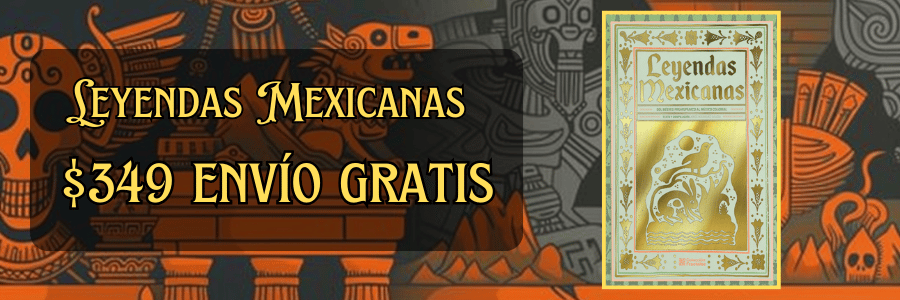Aztec Art: Stone Carvings, Codices, and Featherwork
Art holds a significant place within the cultures around the globe, serving as a window into their worldviews, histories, and spiritual beliefs. Among the most fascinating of these cultures is that of the Aztecs, who flourished in central Mexico from the 14th to the 16th centuries. With a myriad of artistic expressions, their creations encapsulate a rich tapestry of life reflecting their complex society, religious convictions, and remarkable skills. Aztec art can be categorized primarily into stone carvings, codices, and featherwork, each constituting a distinct yet interconnected aspect of the civilization’s artistic legacy.
The Aztec civilization is renowned for its impressive stone carvings, a hallmark of their artistic expression. Unlike many cultures that relied on wood or metal, the Aztecs primarily worked with stone, a resource that was both abundant and suitable for their grand architectural endeavors. The emperors of the Aztec Empire commissioned monumental sculptures that adorned their temples and plazas. This stone art was often imbued with deep symbolism, reflecting their religious beliefs and sociopolitical values. Stone was not merely a material but a way for Aztec artists to communicate deity narratives, historical events, and a range of complex emotions.
One of the defining characteristics of Aztec stone carvings is their scale and grandeur. The Tlaloc monolith, for example, is a stunning representation of Tlaloc, the rain god, measuring several meters in height. It is intricately embellished with motifs that denote fertility and the life-giving powers of water. These larger-than-life sculptures were typically placed near temples, reinforcing the importance of deities connected to natural phenomena. The colossal displays were not only ceremonial entrances to sacred spaces but also acted as portals through which the sacred and mundane worlds could interact.
Aztec stone carvings were not limited to monumental sculptures; they also included functional objects such as altars, steles, and even weaponry. Much of the decorative stonework featured elaborate reliefs depicting gods, warriors, animals, and cosmological symbols. The Coyolxauhqui stone, discovered at the base of the Templo Mayor, is one such monumental representation, depicting the Aztec moon goddess in a dynamic pose. This imagery served both decorative and ritualistic purposes, as it was central to the mythology surrounding the goddess, reflecting the duality of life and death, the cyclical nature of existence, and the narrative of Aztec cosmology.
In addition to stone carvings, the Aztecs were also known for creating codices, which were books or documents made from bark paper, deer hide, or even cotton cloth. These codices are indispensable in understanding the intricacies of Aztec society, serving both administrative and educational functions. Written in a pictographic script, they contain valuable insights into the Aztecs’ history, legal systems, agricultural practices, taxation, and rituals. This visual language combines symbols that represent both ideas and sounds, allowing for a complex layering of meaning and a unique method of storytelling that was emblematic of their rich culture.
The codices often included detailed illustrations that depicted various aspects of Aztec life and were produced by highly skilled scribes. One of the most notable codices is the Codex Mendoza, commissioned by the first viceroy of New Spain shortly after the Spanish conquest. It is an irreplaceable document that provides a comprehensive view of Aztec society during its height, showcasing not only the social hierarchy and tributes but also the cultural practices and beliefs of the Aztecs. This vibrant visual document serves as both a historical record and a testament to the sophisticated artistry inherent in Aztec codices.
Codices were typically created for specific purposes, including religious ceremonies, historical accounts, and even tribute collections. The Codex Borgia, for instance, is widely recognized for its intricate and colorful depictions of the Aztec calendar and rituals associated with the gods. These artworks are not only aesthetically pleasing but also rich in iconography, utilizing colors and symbols to convey complex narratives and ideologies central to Aztec cosmology. The capacity to weave story and image so gracefully showcases the profound belief systems held by the Aztecs, grounding their experiences within the broader universe.
To better understand the artists behind this magnificent body of work, one must acknowledge the role of training and craftsmanship within the Aztec community. Artistic apprenticeship in the Aztec culture was taken very seriously, with young artists learning from masters in specialized schools. These artists were often adept in numerous techniques, including carving, painting, and weaving. The skills of an artist were essential for maintaining the societal fabric, as their creations held religious, political, and economic significances that shaped the very essence of the Aztec experience.
Another area where the Aztecs excelled was in featherwork, a unique art form showcasing their elaborate and skilled craftsmanship. Featherwork was revered in Aztec society, with feathers considered as precious as gold. The artists who mastered this technique used feathers from birds native to the region, such as quetzals, hummingbirds, and various parrots. The vibrant colors and exquisite textures of these feathers allowed artists to create luxurious garments, ceremonial headdresses, banners, and decorative objects. Featherwork was more than mere decoration; it was a representation of power, status, and the artists’ deep connection to nature.
The process of featherwork was laborious and painstaking, involving intricate stitching techniques to attach feathers to a base, often made of cotton or leather. Each piece required immense skill and patience, and this artistry was reserved for those of high status. The Feathered Serpent, represented by the god Quetzalcoatl, was a frequent motif in Aztec featherwork, combining elements of their mythology with tangible artistry that could be worn or displayed. The culmination of artistry in featherwork underscored significant life events, including weddings and religious ceremonies, solidifying its importance within the sacred and the social.
The societal structure of the Aztecs also influenced their art. Artisans often belonged to specific guilds and were organized into ranks, where the most skilled received the highest honors and were commissioned for grand projects. This hierarchical structure encouraged the specialization of various artistic forms, contributing to the diversity of Aztec art. The role of artists within society was integral, as they produced works that fortified social cohesion and served as reminders of their collective beliefs and identities.
Furthermore, the Aztecs’ artistic expressions underwent transformations upon contact with European colonizers in the early 16th century. The social and cultural upheaval brought about by the Spanish conquest transformed the once flourishing art scene into one perplexed by change. Many indigenous artists began to incorporate European styles, materials, and themes into their work, culminating in a fusion of pre-Columbian elements and European influences. This hybridization resulted in new forms of art, serving both the original practices and the demand from colonial powers.
Despite the eventual decline of Aztec art due to colonization, the legacy of their creativity endures. Today, artifacts such as stone carvings, codices, and featherwork are invaluable treasures that offer insight into the depth of their civilization. Museums worldwide house these treasures, serving not only as artifacts of beauty but as markers of faith and resilience. Their artistry is a profound reminder that the spirit of the Aztec people continues to thrive, resonating through their creations, stories, and the remnants of their vibrant culture.
In conclusion, Aztec art remains an intricate tapestry woven from the threads of stone carvings, codices, and featherwork. This artistic legacy showcases a civilization rich in spirituality, sophistication, and creativity. The magnificence of their stone sculptures speaks volumes about their devotion to their gods, while the detail of their codices preserves their stories, laws, and traditions. Featherwork stands as a testament to their connection with nature and the beauty they found in it. Understanding these forms of artistic expression not only honors the rich history of the Aztec civilization but also provides a profound appreciation for the creativity that continues to inspire generations worldwide. The enduring legacy of Aztec art is a celebration of humanity’s capacity for expression, resilience, and beauty, an acknowledgment of the depth of cultural narrative that each brushstroke, chisel mark, and feather embodies.
Explore More:
| Colonial Mexican Markets: Trade, Goods, and Economy |
| The Role of Disease in Weakening the Aztec Empire |
| The Aftermath of the Mexican Revolution: Social and Economic Changes |
| How Mexico is Supporting Women Entrepreneurs |
| The Role of Intellectuals in Shaping Mexican Policy Post-Revolution |
| Mexico’s Growing Tech Industry: A Look at Innovation Hubs |
| The Battle of Puebla: A Victory That Reverberated Around the World |
| The Influence of Mexican Muralists on 20th-Century Art Movements |
| The Social Divisions Highlighted by Mexico’s War of Reform |
| The French Empire’s Ambitions in Latin America: The Mexican Adventure |



